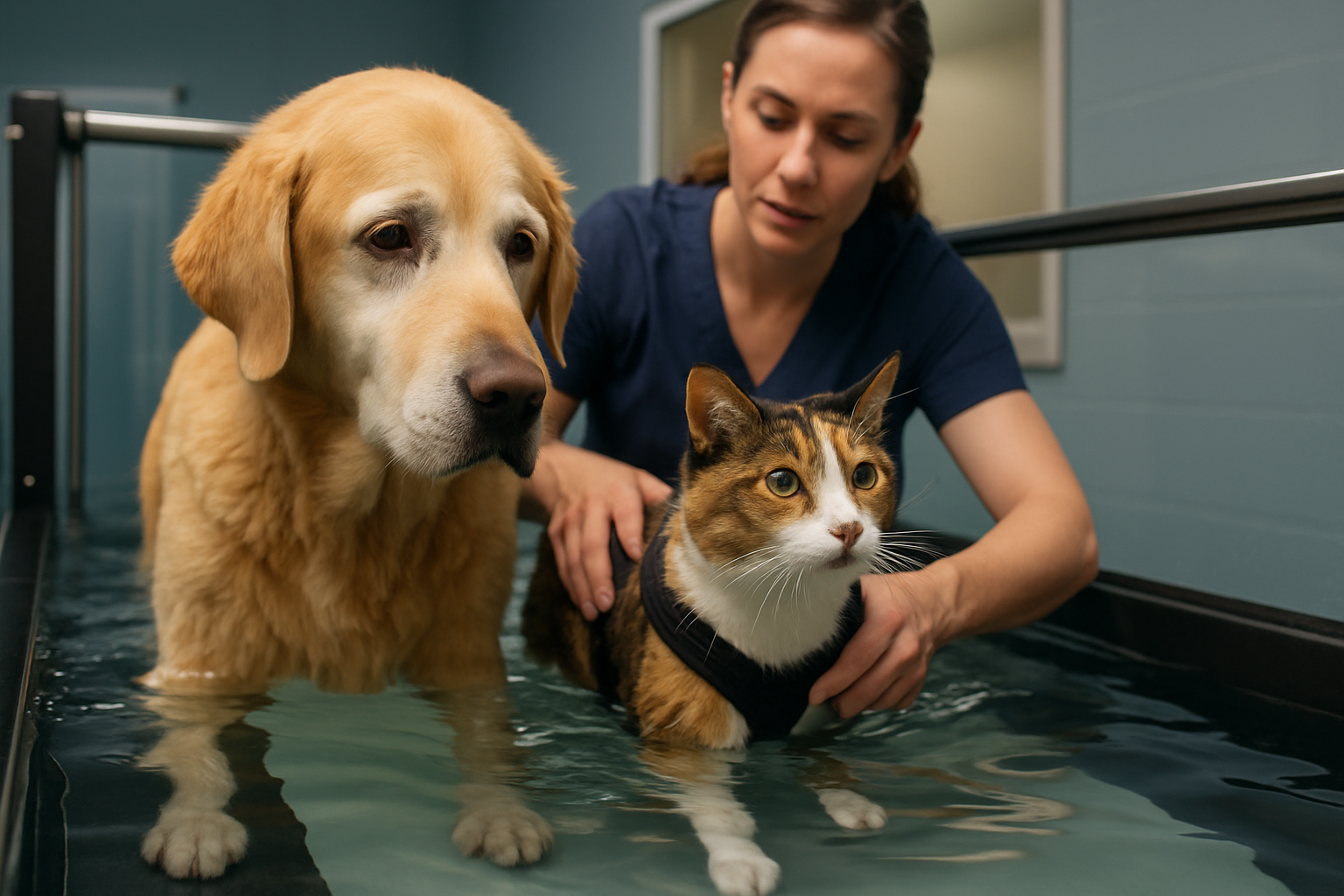Understanding Coverage for Your Animal's Health
Pet insurance provides financial protection against unexpected veterinary costs, helping pet owners afford quality care for their furry companions. As veterinary medicine advances, treatments become more sophisticated but also more expensive. Having a reliable insurance plan can mean the difference between making difficult financial decisions and providing your pet with the best possible care when they need it most.

Pet insurance has become increasingly important as veterinary medicine continues to evolve, offering treatments comparable to human healthcare. For many pet owners, their animals are beloved family members deserving of comprehensive medical care throughout their lives. Understanding how pet insurance works and what benefits it provides can help you make informed decisions about protecting your pet’s health while managing potential financial burdens.
Why Pet Insurance is Essential for Your Pet’s Health and Longevity
Pet insurance serves as a financial safety net for unexpected veterinary expenses. Unlike human health insurance, most pet insurance plans operate on a reimbursement model—you pay the veterinarian directly and then submit claims to your insurance provider for reimbursement according to your policy terms. This system allows you to choose any licensed veterinarian without worrying about network restrictions.
The primary benefit of pet insurance is enabling pet owners to make medical decisions based on what’s best for their pet rather than what they can afford at the moment. Emergency veterinary care can cost thousands of dollars, particularly for serious conditions like fractures, foreign body ingestion, or acute illnesses. With proper coverage, pet owners can pursue necessary treatments without the added stress of financial constraints.
Additionally, some pet insurance plans cover preventive care, including routine check-ups, vaccinations, and dental cleanings. These wellness plans encourage regular veterinary visits that can detect health issues early, potentially extending your pet’s lifespan through proactive healthcare management.
Protect Your Pet’s Future: The Importance of Pet Insurance and How It Benefits You
Pet insurance provides peace of mind by reducing financial uncertainty around pet healthcare. According to veterinary statistics, one in three pets will require emergency treatment each year, and the average emergency veterinary visit can cost between $800 and $1,500, with complex conditions potentially exceeding $3,000-$5,000.
Beyond emergency coverage, pet insurance benefits pet owners by:
- Allowing budget predictability through fixed monthly premiums
- Providing coverage for hereditary and congenital conditions (with most comprehensive plans)
- Offering multi-pet discounts for households with multiple animals
- Including coverage for alternative therapies like acupuncture or physical therapy (with select plans)
Pet insurance also benefits you by preventing the accumulation of veterinary debt. Many pet owners without insurance resort to credit cards or specialized veterinary financing options that can carry high interest rates, potentially creating long-term financial strain.
How Pet Insurance Supports Proactive Care and Emergency Medical Coverage
A comprehensive pet insurance plan typically covers both unexpected emergencies and ongoing care for chronic conditions. This dual approach to coverage encourages proactive healthcare management while providing security for unforeseen situations.
For emergencies, most plans cover: - Accident-related injuries (broken bones, lacerations, foreign body ingestion) - Sudden illnesses (infections, poisoning, digestive issues) - Diagnostic testing (blood work, X-rays, ultrasounds, MRIs) - Hospitalization and surgical procedures - Prescription medications
For ongoing and preventive care, select plans may cover: - Annual wellness exams - Vaccinations and preventive medications - Dental cleanings and care - Behavior therapy - Nutritional counseling
This comprehensive approach to coverage allows pet owners to maintain their pet’s health through regular preventive care while having protection against major medical expenses that could otherwise be financially devastating.
Choosing the Right Pet Insurance: A Guide to Coverage, Costs, and Benefits
Selecting the appropriate pet insurance plan requires understanding several key factors that influence coverage and cost. The most important considerations include:
- Coverage types: Accident-only, accident and illness, or comprehensive (including wellness)
- Reimbursement percentage: Typically ranging from 70% to 90% of covered expenses
- Annual deductible: The amount you pay before insurance coverage begins
- Annual or lifetime coverage limits: Maximum amount the insurer will pay per year or over your pet’s lifetime
- Waiting periods: Time between enrollment and when coverage begins
- Exclusions: Pre-existing conditions, hereditary issues, and breed-specific concerns
Age and breed significantly impact premium costs. Generally, it’s best to enroll pets when they’re young before developing pre-existing conditions that won’t be covered. Some breeds prone to specific health issues may face higher premiums or limited coverage for certain conditions.
Insurance Providers: Coverage Options and Cost Comparison
When evaluating pet insurance options, comparing several established providers helps identify the best value for your specific needs. Here’s how some major pet insurance companies compare:
| Provider | Basic Coverage | Premium Coverage | Monthly Cost Range | Deductible Options |
|---|---|---|---|---|
| Healthy Paws | Accidents, illnesses, emergency care | + Hereditary conditions, specialist care | $25-$50 | $100-$500 |
| Nationwide | Accidents, common illnesses | + Wellness, preventive care | $35-$70 | $100-$250 |
| Trupanion | Accidents, illnesses, medications | + 90% reimbursement on all claims | $40-$100 | $0-$1,000 |
| Embrace | Accidents, illnesses, dental trauma | + Wellness rewards program | $30-$60 | $200-$1,000 |
| ASPCA | Accidents, illnesses, behavioral issues | + Preventive care packages | $25-$75 | $100-$500 |
Prices, rates, or cost estimates mentioned in this article are based on the latest available information but may change over time. Independent research is advised before making financial decisions.
A Smart Investment in Your Pet’s Health, Well-being, and Peace of Mind
Ultimately, pet insurance represents an investment in both your pet’s health and your financial security. The average pet owner can expect to spend thousands of dollars on veterinary care throughout their pet’s lifetime, with costs increasing as pets age and develop more health issues.
When evaluating whether pet insurance makes financial sense for your situation, consider your pet’s breed-specific health risks, your financial ability to handle unexpected expenses, and your personal comfort with risk. Some pet owners prefer setting aside money in a dedicated savings account for pet emergencies, while others value the structured protection that insurance provides.
Remember that pet insurance works best when obtained early in your pet’s life before pre-existing conditions develop. Most policies don’t cover conditions that existed before enrollment, making early adoption of insurance the most effective strategy for maximizing coverage.
By carefully researching providers, understanding policy details, and selecting appropriate coverage levels, pet owners can secure valuable protection that supports their pet’s health needs throughout their lifetime while providing peace of mind against unexpected veterinary expenses.
This article is for informational purposes only and should not be considered medical advice. Please consult a qualified veterinary professional for personalized guidance and treatment for your pet.




